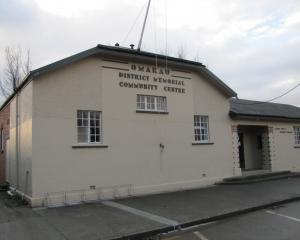
Situated in Lowburn on the shore of Lake Dunstan, the 10,000sq m of inflatable equipment that makes up Kiwi Water Park was an instant hit, hundreds of people flocking to its opening day.
Two years in the planning, Kiwi Water Park is the brainchild of Queenstown businesswoman Emily Rutherford.
She had been based in London, organising entertainment for large-scale events, and had seen similar set-ups in places such as Dubai, she said.
"I thought, ‘Wow. This would be amazing down here in the summer’."
The idea remained just that until early this year when the Covid-19 pandemic forced her hand.
"When Covid hit, events in London and Dubai were all cancelled.
"Before that I was still working in London and wasn’t able to do it."

"I spent lockdown here with my mum planning this business."
The equipment — imported from China — was "hugely expensive" and while she would not put a dollar figure on it, it was in the range of "hundreds of thousands".
Setting up on Lake Dunstan had not been smooth sailing, as she had faced delays in getting the equipment shipped from China and the logistics had been more than she bargained for.
It required the work of professional engineers and the "biggest crane in the region" to install 60 tonnes of anchoring blocks, as well as needing workers, divers and diggers to set up, Ms Rutherford said.
"It was a huge operation — much more difficult than you would think."
Her resource consent was from December 1 but the logistics had caused some hold-ups.
The Lake Dunstan site was chosen as it was just five minutes from Cromwell, 25 minutes from Wanaka and two and a-half hours from Dunedin, she said.
"It’s a good central location and the water temperatures are much warmer than Lake Wakatipu or Lake Wanaka."
The water park is set in deep water for safety and lifejackets are compulsory. She planned to open for three months every summer and thought she would extend the resource consent beyond its 2026 expiry, she said.
How does it compare to other water parks?
The jury was still out, Ms Rutherford said.
She was confident it was one of the largest in New Zealand — definitely the largest in the South Island — and she planned to add to it every year to keep people coming back.












